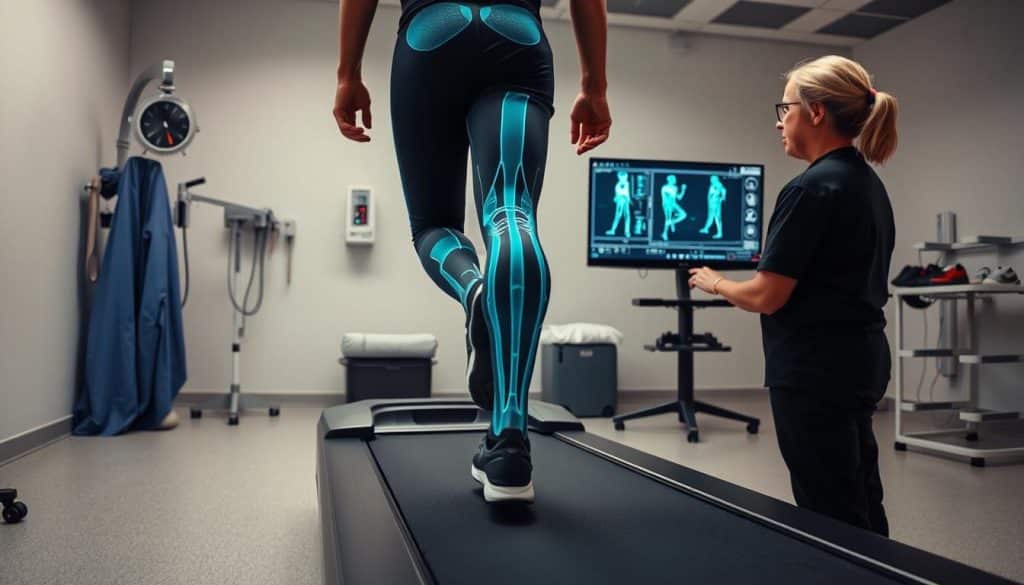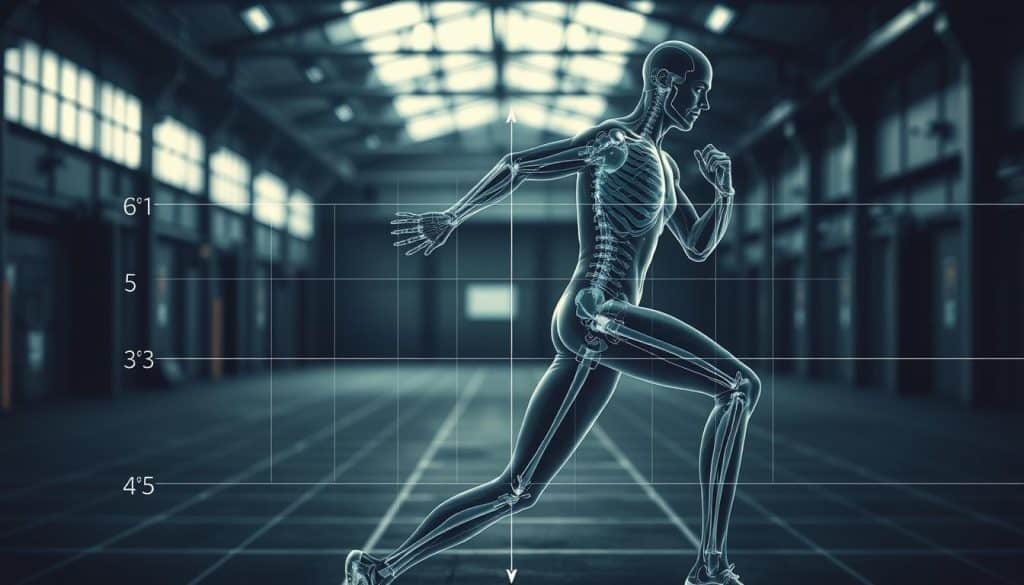Every athlete knows peak performance starts with how the body moves. Coordinated muscle activity, skeletal alignment, and neurological integration form the foundation of efficient movement. When these elements work together, they reduce strain, conserve energy, and protect against common injuries.
At Riverside Sports Therapy in Calgary, tailored programs help athletes refine their techniques. By focusing on posture and alignment, specialists address imbalances that lead to wear and tear. This approach not only enhances performance but also builds resilience for long-term musculoskeletal health.
Understanding how muscles interact during dynamic actions is critical. Proper training minimizes wasted effort, allowing athletes to push limits safely. Whether recovering from an injury or aiming for new goals, integrating science-backed strategies ensures sustainable progress.
This article explores practical methods to optimize athletic potential. From biomechanics to personalized therapy plans, discover how Calgary’s athletes stay ahead. Ready to elevate your game? Reach out to Riverside Sports Therapy at (403) 283-7551 for expert guidance.
Key Takeaways
- Efficient movement relies on muscle coordination and skeletal alignment.
- Proper techniques reduce energy waste and injury risks during training.
- Posture refinement helps address imbalances affecting performance.
- Tailored therapy plans combine biomechanics with recovery strategies.
- Understanding muscle interactions enhances athletic resilience.
- Science-backed methods support long-term musculoskeletal health.
Understanding the Fundamentals of Body Mechanics
Optimal physical performance begins with three pillars: posture, balance, and alignment. These elements act like a blueprint for how we interact with gravity and external forces. Studies show poor alignment increases joint strain by up to 40% during repetitive motions, according to WorkSafeBC data from 2013.
Building Stability Through Structural Awareness
Posture isn’t just standing tall – it’s maintaining your center of gravity over your base. Think of construction workers lifting materials: bending knees instead of rounding the spine reduces back injury risks. At Riverside Sports Therapy, specialists use motion analysis to identify subtle imbalances affecting Calgary’s active population.
| Posture Factor | Impact on Ligaments | Injury Risk |
|---|---|---|
| Proper Alignment | Even tension distribution | Low |
| Forward Head Position | Neck ligament strain | High |
| Hip Misalignment | Knee instability | Moderate-High |
How Tissues Work Together
Ligaments act like safety ropes between bones – they prevent excessive joint motion while allowing functional movement. Perry et al. (2018) found that proper spinal alignment decreases disc compression forces by 28% during weight training. This science explains why marathon runners focus on hip positioning as much as mileage.
Daily habits matter. Slouching at desks creates uneven muscle tension that pulls joints out of position. Over months, this “creep” effect weakens connective tissues. Corrective strategies might include:
- Ergonomic workstation adjustments
- Targeted mobility exercises
- Gait pattern analysis
Calgary’s sports therapists emphasize that alignment isn’t static – it’s dynamic control during motion. Whether sprinting or lifting groceries, coordinated movement patterns protect tissues from cumulative damage.
Applying “body mechanics principles for athletes” in Sports Therapy
Precision in movement analysis separates temporary fixes from lasting results. Sports therapists use advanced tools to decode how athletes’ bones, muscles, and joints interact during activity. A 2021 Journal of Sports Medicine study found athletes who underwent movement screening reduced injury rates by 35% compared to control groups.

Evaluating Movement Patterns
Specialists assess gait cycles, joint angles, and muscle activation using 3D motion capture technology. For example, uneven hip rotation during sprints often signals imbalanced core function. These insights guide corrective strategies tailored to individual needs.
| Assessment Tool | Focus Area | Key Benefit |
|---|---|---|
| Force Plate Analysis | Weight distribution | Identifies asymmetries |
| EMG Sensors | Muscle activation timing | Prevents overcompensation |
| Video Analysis | Joint position tracking | Improves technique accuracy |
Preventing Injuries Through Proper Technique
Maintaining neutral back alignment during lifts distributes forces evenly across vertebrae.
“Athletes who maintain proper torso position during deadlifts experience 62% less disc compression,”
notes a 2023 biomechanics review. Therapists reinforce this through:
- Real-time posture feedback systems
- Dynamic stability drills
- Sport-specific movement retraining
Calgary’s sports clinics prioritize prevention by analyzing how foot strike patterns affect knee health. This proactive approach helps athletes refine their gait while protecting vulnerable joints from repetitive stress.
Implementing Effective Lifting and Transfer Techniques
Mastering safe lifting methods transforms how forces travel through the frame. Whether moving equipment or assisting clients, strategic positioning reduces wear on vulnerable areas. This approach benefits both sports professionals and therapy patients in Calgary’s active community.
Maintaining a Stable Base and Correct Stance
Foot placement determines success. A shoulder-width stance creates a solid foundation, distributing weight evenly across both legs. This lowers the center of gravity, enhancing control during transfers.
| Technique | Joint Impact | Tendon Stress |
|---|---|---|
| Knees bent, chest up | Even hip pressure | Reduced Achilles strain |
| Leaning forward | Knee shear forces | Rotator cuff tension |
| Twisting while lifting | Spinal disc compression | Wrist tendonitis risk |
Bending at the knees – not the waist – engages powerful leg muscles instead of straining back tissues. Keep objects close to your core to minimize lever-arm stress on shoulders. Therapists often use these principles when helping hockey players recover from groin injuries.
- Test an object’s weight by nudging it with your foot first
- Align your nose between toes to prevent spinal rotation
- Exhale during exertion to stabilize core muscles
Proper form protects both parties during assisted transfers. A Calgary-based physiotherapist recently shared:
“Clients who apply these techniques report 50% fewer shoulder strains during rehabilitation exercises.”
Coordinated effort between arms and legs creates efficient motion patterns. This teamwork preserves joint cartilage and tendon elasticity over time, keeping athletes in the game longer.
Optimizing Athletic Performance with Biomechanics
Modern sports science leverages biomechanical insights to refine how athletes train, recover, and compete. Advanced motion capture systems and wearable sensors now map movement patterns with millimeter precision. These tools identify inefficiencies that traditional coaching might miss, creating opportunities for targeted improvements.

Utilizing Movement Analysis and Equipment
Biomechanical assessments reveal how shifts in centre gravity affect stability during dynamic actions. A 2022 Sports Engineering study found customized footwear designed using force plate data reduced risk injury by 42% in basketball players. Technologies like dynamometers measure muscle output, while EMG sensors track activation timing across muscle groups.
| Technology | Function | Benefit |
|---|---|---|
| Force Platforms | Track weight distribution | Optimizes base support |
| EMG Sensors | Monitor muscle engagement | Prevents overuse injuries |
| Dynamometers | Measure joint torque | Enhances equipment design |
Integrating Strength and Flexibility Training
Balancing power with mobility ensures proper body mechanics under load. For example, hockey players using tailored resistance bands improve hip mobility while maintaining outside base support during lateral movements. Key strategies include:
- Dynamic warm-ups mimicking sport-specific motions
- Eccentric loading to strengthen tendons
- Real-time feedback systems during lifts
Calgary therapists often combine balance boards with strength drills. One alpine skater increased jump height by 9% after six weeks of proprioceptive training. Such outcomes highlight how biomechanics bridges theory and practice in athletic development.
Personalizing Sports Therapy at Riverside Sports Therapy
No two athletes move exactly alike – that’s why cookie-cutter approaches fail. At Riverside Sports Therapy, Calgary’s active individuals receive movement plans shaped by their unique physical blueprint. Specialists analyze how force travels through joints during sport-specific actions, ensuring support systems match each client’s demands.
Tailoring Body Mechanics Techniques to Individual Needs
Therapists start with 3D motion capture to map weight distribution across the base of support. One volleyball player improved her spike power by 18% after adjusting her takeoff foot placement. Key assessment tools include:
| Sport | Focus Area | Adjustment |
|---|---|---|
| Hockey | Outside base stability | Wider stance drills |
| Running | Force absorption | Cadence modification |
| Cycling | Center of gravity | Seat height optimization |
Dynamic balance tests reveal how athletes manage gravity during directional changes. A recent client reduced ankle sprains by strengthening lateral hip muscles – crucial for maintaining stability during soccer pivots.
Contact Information and Local Calgary Expertise
Riverside’s therapists combine biomechanics with hands-on Calgary sports knowledge.
“We see how prairie terrain and climate affect movement patterns – that insight shapes our training adjustments,”
notes lead therapist Mark Winslow. Clients benefit from:
- Custom exercise progressions based on force plate data
- Video analysis comparing pre/post therapy form
- Ergonomic recommendations for workplace recovery
Proper body alignment during rehab exercises prevents compensatory injuries. Call Riverside Sports Therapy at (403) 283-7551 to book your personalized assessment. Their YYC-based team helps athletes build resilient movement patterns that withstand competitive pressures.
Conclusion
In sports, how you move determines how far you go. Analyzing factors like centre of gravity and weight distribution transforms how forces impact joints during high-intensity movements. Proper alignment reduces strain on vulnerable parts while boosting power output – a game-changer for competitive performance.
Calgary’s active individuals benefit from personalized strategies that address unique physical needs. Whether adjusting foot placement for stability or refining lifting techniques, science-backed approaches protect long-term health. These methods prevent cumulative damage from repetitive motions, keeping objects like joints and tendons functioning optimally.
Every person’s movement patterns tell a story. At Riverside Sports Therapy, specialists decode these narratives using advanced biomechanical tools. Their expertise helps athletes build resilient techniques that withstand training demands while minimizing injury risks.
Prioritize your health by integrating these principles into daily routines. Small adjustments to posture or weight transfer create lasting benefits. Ready to move smarter? Contact Riverside Sports Therapy at (403) 283-7551 – your partner in achieving peak performance safely.
